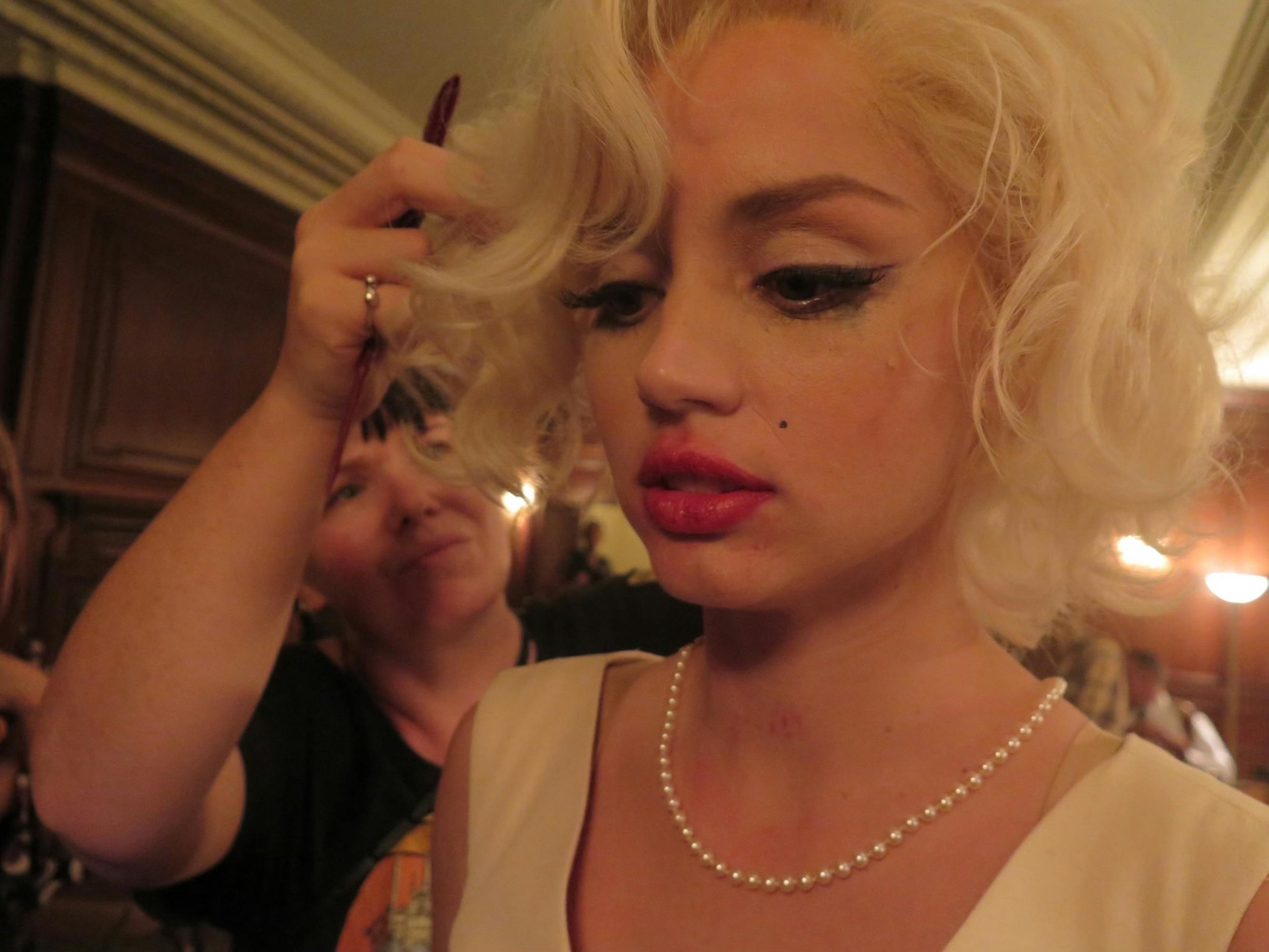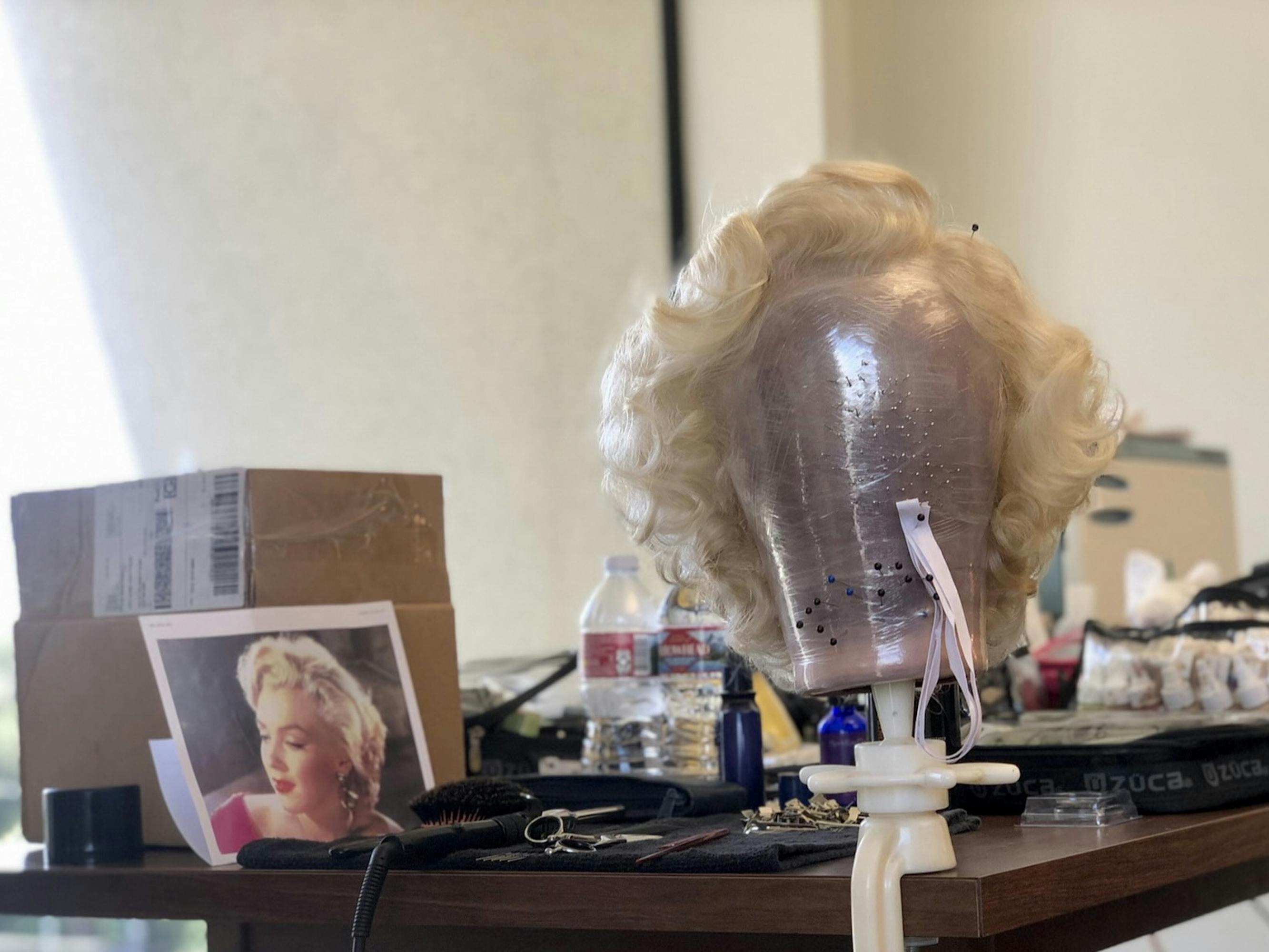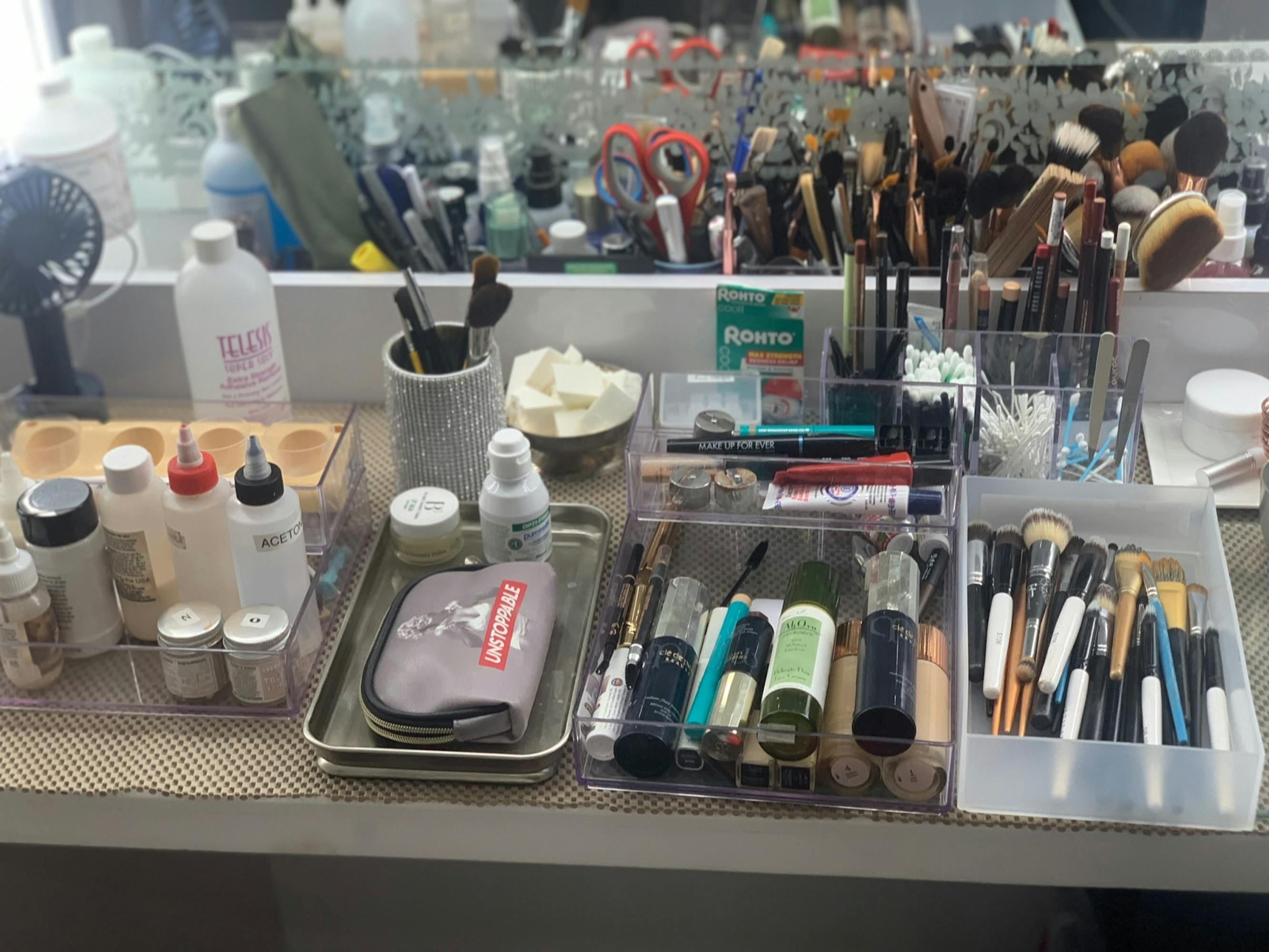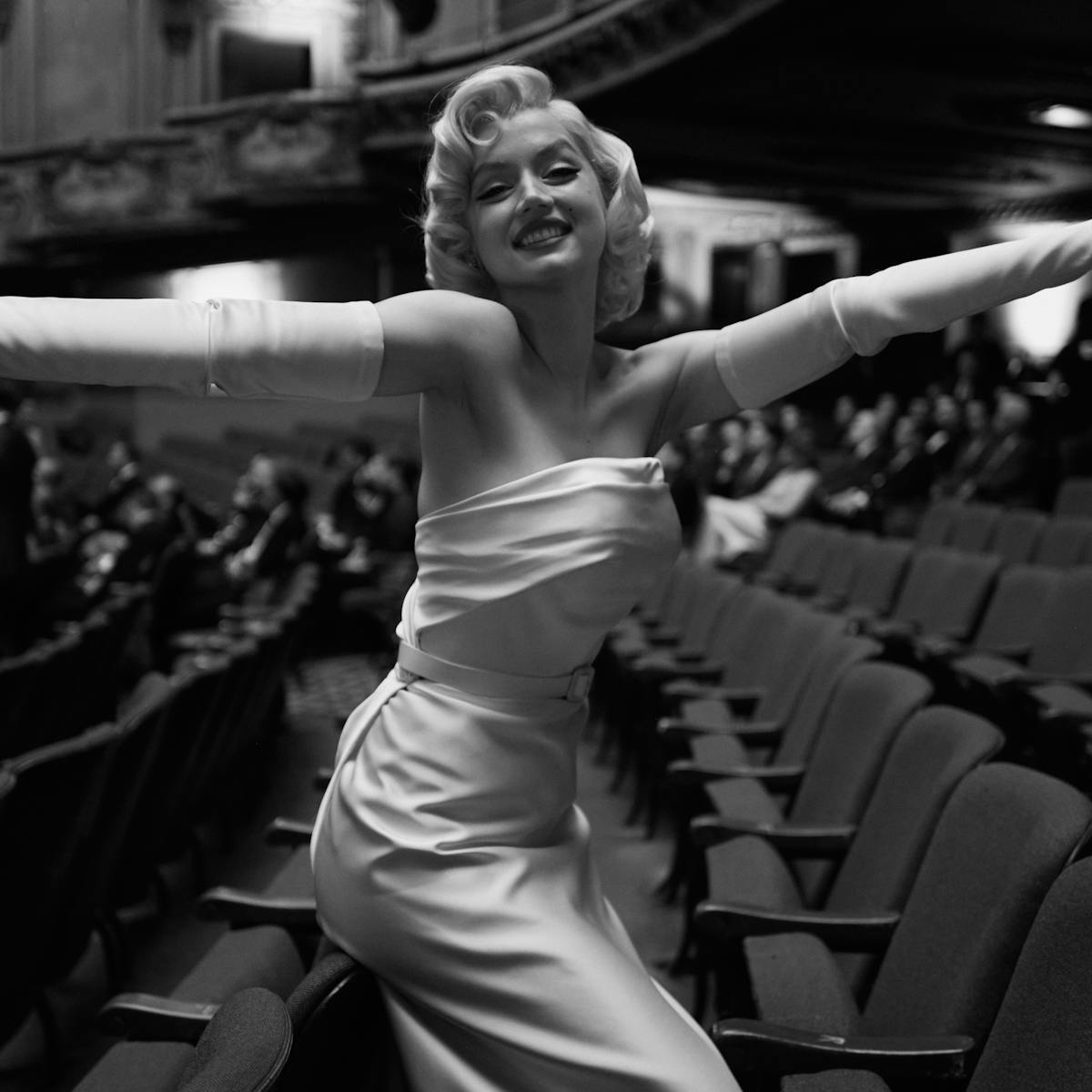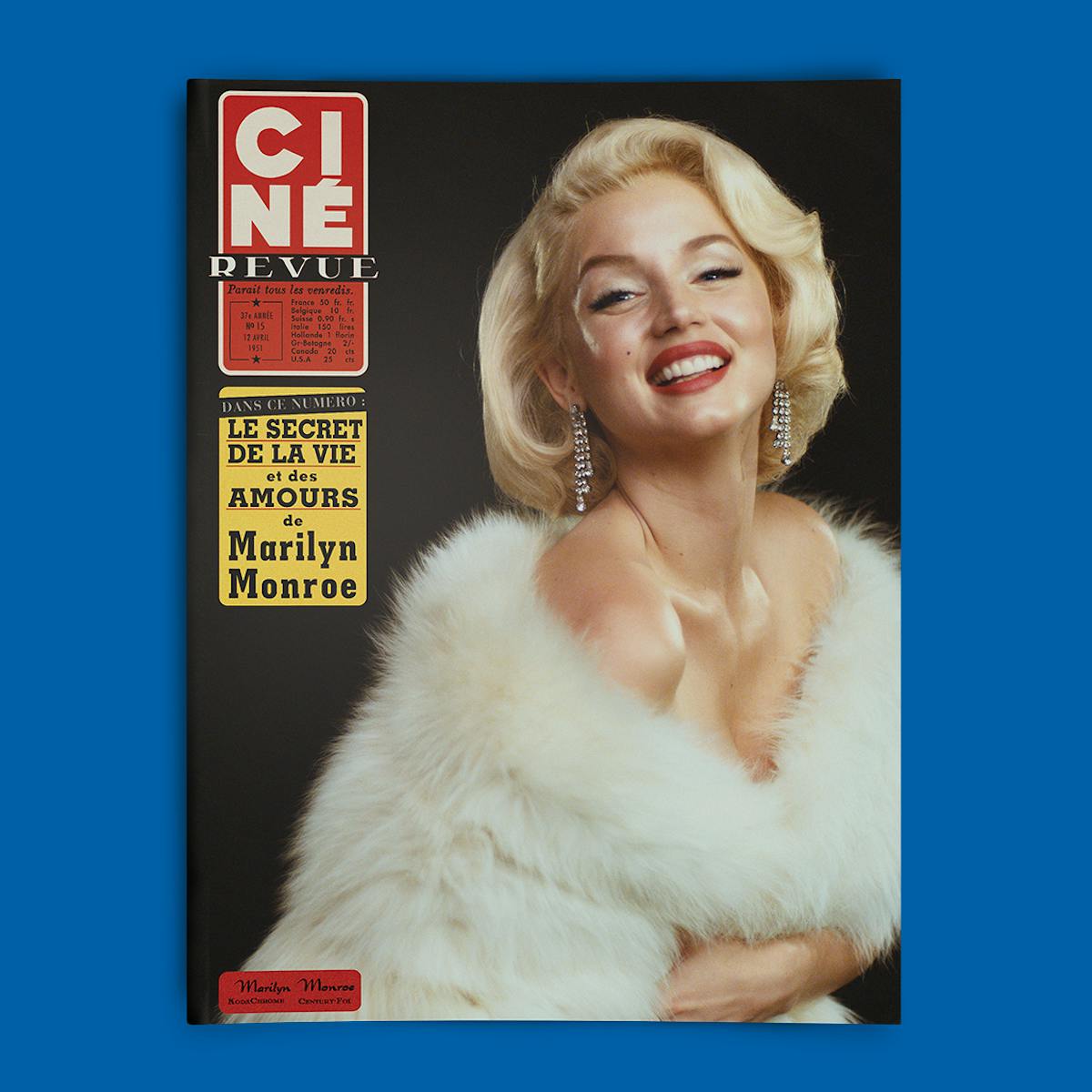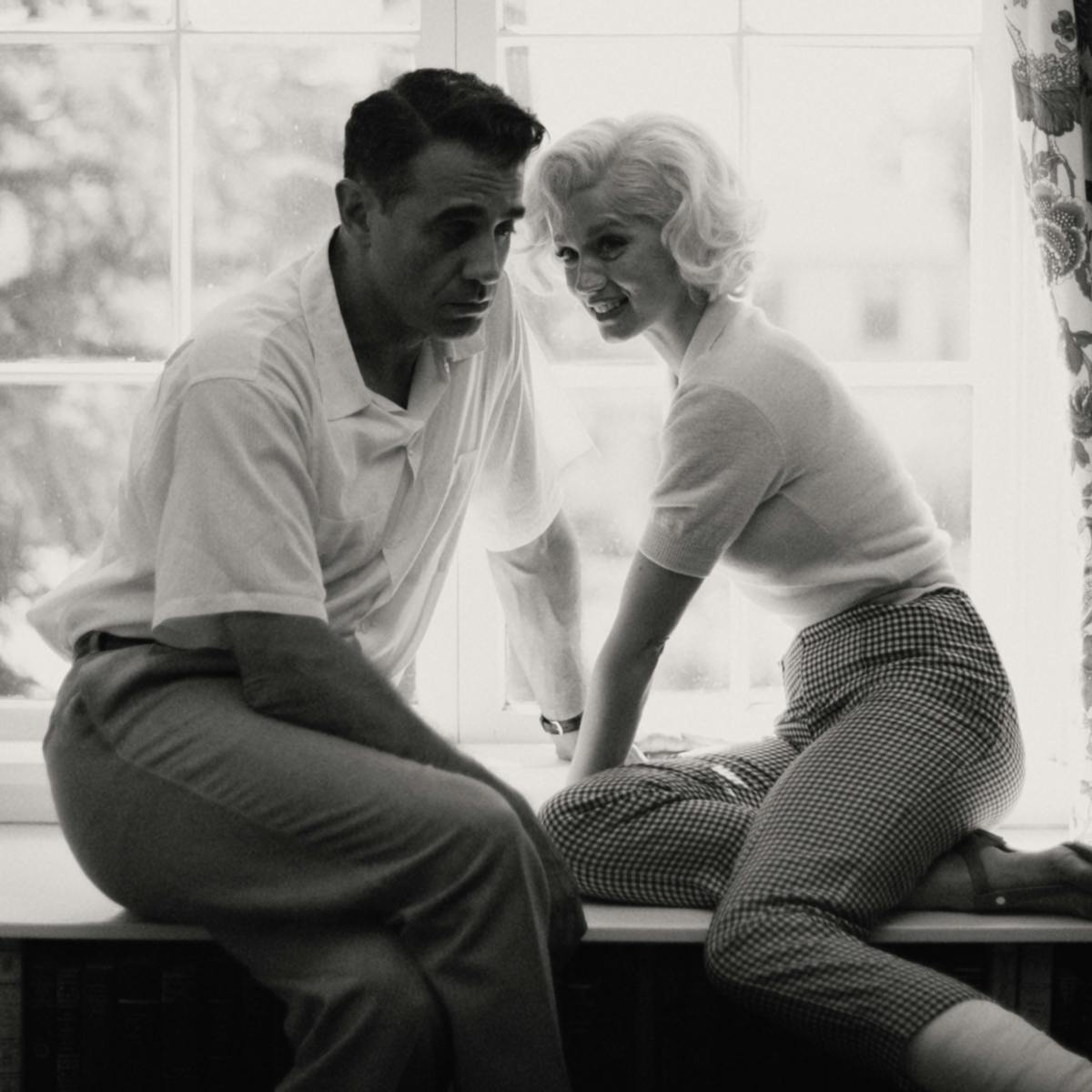Hair and makeup heads Tina Roesler Kerwin and Jaime Leigh McIntosh capture the many faces of Marilyn in Blonde.
Makeup artist Tina Roesler Kerwin already had a project lined up when she was approached about taking on writer-director Andrew Dominik’s latest film instead — in an act of blind faith, she signed on to be one of the creative visionaries behind Blonde. On Kerwin’s recommendation, hair stylist Jaime Leigh McIntosh also joined the team and the two set out to recreate one of the most photographed icons of the twentieth century for Dominik’s precisely envisioned project.
As head of the film’s makeup and hair departments, respectively, Kerwin (The Gray Man, Top Gun: Maverick) and McIntosh (Bombshell, Black Panther) were tasked with transforming actor Ana de Armas into Marilyn Monroe in a film that covers decades of the legend’s tumultuous life. It was a monumental undertaking, but both artists were guided by Dominik’s clarity about what kind of film he was setting out to make. Using Joyce Carol Oates’s 2000 novel as his source material, Dominik wanted to show the fictional interior life of Monroe, to spotlight the woman born as Norma Jeane Mortenson in a way the world had never seen her. Dominik “had the walls covered in photographs to help tell the story and the visuals that he was looking forward to,” Kerwin says. “Andrew wanted the story to be told through the photographs.” This made the work of transforming de Armas into Marilyn all the more exacting.
He cast de Armas as his star before the project had even been greenlit. He thought the Knives Out actor bore a striking resemblance to the screen legend from a different era, though it was her instinct toward discovery that most impressed him during the audition. “Acting is not about getting it right — acting is about getting it wrong in a way that reveals truth,” Dominik says. He knew de Armas had the imagination required to meet the character on an emotional level. Through their expertise, Kerwin and McIntosh would close the gap of their physical differences, crafting an uncanny resemblance.
With every look, Kerwin and McIntosh found themselves working at the intersection of Ana, Marilyn, and Norma. Each tweak they made along the filmmaking process was meant to be invisible, to allow de Armas’s performance to shine through as Norma Jeane across time. Through a series of vignettes, Blonde brings to life some of the most recognizable moments of Marilyn’s career. As such, Kerwin and McIntosh would sometimes have to make multiple transformations in a single day, always ready to shoot a poster recreation or an iconic movie scene that replicated the original to an astonishingly accurate degree. Blonde is a testament to the power of makeup and hairstyling to transform an actor and transport an audience. In remaking a globally adored star, Kerwin and McIntosh found space to get creative and showcase the power of their craft.
The Quintessential Blonde
McIntosh was tasked with styling de Armas’s wigs in such a way that they looked, credibly, like Marilyn’s famed locks. “Her hairstyle is a personality all on its own,” McIntosh says. Depending on the photo, Marilyn’s hair would vary in color and dimension, so McIntosh experimented with different dyes and wigs, landing on just a few that would carry de Armas through the film’s demanding scenes.
But styling the wigs presented its own set of challenges, as did the contrast between de Armas’s brunette hair and her character’s much lighter color. Kerwin’s team created a partial bald cap, a prosthetic flesh piece to use around the wig’s setting, so that the blonde hair would appear natural on de Armas’s head. “Trying to nail down the little details so that it would look like her hair and not a wig was of paramount importance,” McIntosh says. “It took a lot of practice and planning and testing for me to finally find Marilyn. But once I put one of those blonde wigs on Ana, boom. That, for me, was the key to the transformation.”
The Million Dollar Face
Of creating Marilyn’s makeup palette, Kerwin says, “We did a lot of reading and a lot of researching, just like so many people do on every job.” It helped that Marilyn had some known favorite brands and makeup shades to reference. (She famously declared in a 1952 interview with Life Magazine that she wore Chanel No. 5 perfume.) “There are a lot of stories about her makeup and her makeup artist,” Kerwin adds. “We tried to find all of those little tricks that they would use to create Marilyn.”
Kerwin’s team tracked down the specific colors that the icon had favored, but they also recreated some of them to look even more vibrant onscreen. As Dominik explained to Kerwin early on, “I don’t want you to put Marilyn’s makeup on Ana. I want you to find Marilyn within Ana.” This involved some creative tweaking, like mixing lipstick shades or applying false eyelashes at a certain angle to make Marilyn’s look fit de Armas’s face. “Ana’s process took us a little time to work out,” Kerwin says. All in all, the transformation took between two-and-a-half to three hours every day to complete.
I don’t want you to put Marilyn’s makeup on Ana. I want you to find Marilyn within Ana.
Andrew Dominik, writer-director of Blonde, to Tina Roesler Kerwin, makeup artist
The Time Lapse
The hair and makeup teams were always on standby for touch-ups and quick transitions. “On a daily basis, we might jump around from 1953 to 1955 to 1959. So, on set we just never had enough time,” Kerwin says, adding that the makeup and hair professionals would need to adjust their palettes to fit the time period of a sequence and the manner in which it was being shot. “Some of the scenes are black-and-white and some of the scenes are color, and even within a scene, we may shoot both,” Kerwin says. “We tested a lot of colors at the very beginning to see which ones would transition well and which ones wouldn’t. So, we just plotted out for the whole cast where the color should be.”
Sometimes, even Kerwin and McIntosh were stunned by what the team collectively achieved. “There are a couple of scenes that were so surprising how well they were reenacted — it is spooky to see how realistic they are,” Kerwin says. “When she’s singing ‘I Wanna Be Loved by You,’ it is startling.” When asked if a specific scene or look stands out, McIntosh finds it hard to select just one. “We’ve done so many magazine covers, we’ve done so many still images, we’ve re-created so many pieces of film,” she says.
For one scene where Norma Jeane sits in front of a mirror as a makeup artist transforms her into Marilyn, Kerwin stepped in to play the artist. After many long days on set, the transformation still managed to make her emotional. “The side-by-side images of Norma Jean and Marilyn in the same light and the same mirror are pretty shocking,” Kerwin says. “It was beautiful.”

